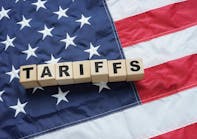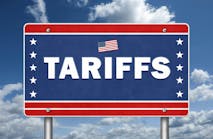By Karen Hanna
In the wake of a Category 4 hurricane that has left at least 1 million power customers in the dark, analysts are predicting more disruptions to the availability of resins, many of which are produced on the Gulf Coast.
“Polymer producers are still in the midst of assessing the damage and figuring out how long it is going to take to get plants back up and running,” said Brian Pruett, senior VP for PE/PP at Chemical Data, a division of Independent Commodity Intelligence Service (ICIS). “We can assume all in the path will be down for four to seven days without damage, and maybe as much as 10 depending on when utilities, etc. come back. We won’t know the extent of any damage, if any, for another couple of days.”
For the plastics industry, already reeling from supply-chain disruptions and the massive ice storms that paralyzed Texas in February, Hurricane Ida’s Aug. 29 landfall could spell more woes, according to ICIS and other forecasting services.
“The market that could be particularly hit hard by Ida is polyvinyl chloride, or PVC,” said Jeremy Pafford, head of market development for North America, ICIS, who noted that PVC already was in short supply. “Expectations are for higher prices, at least in the short term, with the extent of those elevated prices directly correlated to how long affected production capacity remains offline.”
Supply of PP, PET and PE also is likely to be affected.
“Both PP and PET markets have seen at least one force majeure declaration each on production due to Ida impacts, so that is going to further tighten supply in those respective markets, both of which have been under higher pricing pressure for months,” Pafford said.
According to Esteban Sagel, CEO and principal at Chemical and Polymer Market Consultants (ChemPMC), PP inventories were very low, even before the storm, and prices were keeping pace with propylene prices, which had only begun to moderate this month.
Meanwhile, Sagel said, domestic PE manufacturers had finally returned to normal production levels, but, due to relatively high prices, their product wasn’t attracting attention abroad. This situation was allowing domestic inventories to recover somewhat.
“Depending on how long it takes for the production that’s offline to come back, it may help shave off some of the excess inventories, reducing the pressure for prices to drop,” Sagel said. “Propylene supply will also likely be impacted, due to refineries in the region also being offline. This, again, would likely stave off the decline in propylene prices, helping keep polypropylene prices high.”
With prices considerably lower in Asia — as much as 50 cents per pound for PP and 30 cents per pound for PE — manufacturers might find imports attractive. However, Sagel warned, logistical challenges continue to bedevil the global economy. They include a lack of container space, high transportation costs and lengthy turnarounds.
“To give you a reference, in August, the cost for a 20-foot container from Busan [South Korea] to Los Angeles was about 21 cents per pound, and from Shanghai [China] to L.A. about 11 cents per. Transit time for each route was estimated at 12 days from Busan and 18 days from Shanghai. So, there is some risk in imports, but the spreads may justify them,” he said.
Zachary Moore, senior editor manager, PE/PP/PS, ICIS, expressed some optimism about the PE market following the hurricane.
“Polyethylene resins had substantial inventory builds in July, so they should be able to weather this event better than PVC, PP or PET,” he said.
Prior to the storm, Sagel said he expected PP prices to begin to moderate in October, and PE prices to moderate a little earlier, in September or October.
“However, with Ida’s impact, those expectations are up in the air,” he said.
For more information:
ChemPMC, Houston, contact@chempmc.com, www.chempmc.com
ICIS, Houston, 713-525-2613, www.icis.com
Karen Hanna, senior staff reporter






